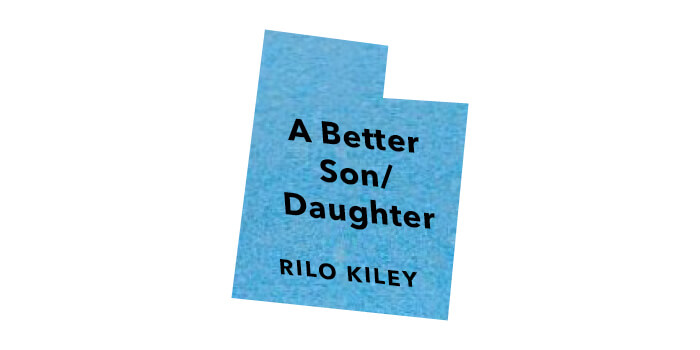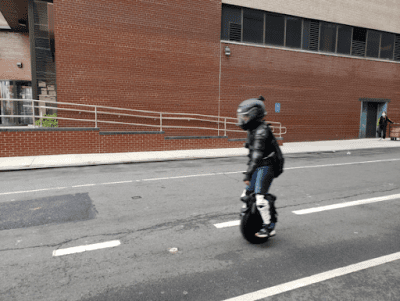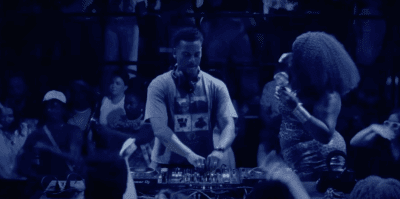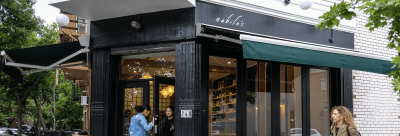Musical Map Of The USA: Utah—Rilo Kiley

They used to think sleep paralysis was caused by a demon sitting on the sufferer’s chest, its haunches digging into the flesh around the ribs. Now, like everybody, they know better but they still don’t know much. Sleep paralysis is (probably) a panic response, in which a person lies trapped with their mind alert, unable to move their body. The need to free the limbs feels akin to the desperation of drowning, but it’s impossible to translate the thought into action. When I experienced it, I would coach myself, through clenched teeth, to move one finger, then the next, and the next, until I could unite my brain and my body.
“A Better Son/Daughter,” the sixth song on Rilo Kiley’s second album, begins breathless, frozen in terror at the moment of waking: “Sometimes in the morning, I am petrified and can’t move,” Jenny Lewis sings. “Awake, but cannot open my eyes.” The album was released in 2002. I found it a few years later.
That lack of control I so often experienced in the strange place between day and night manifested kinetic once the sun was up, so I did, too. After mornings spent trying to scrape air into my lungs, I scraped myself across the country, all the way west. I saw Rilo Kiley play in the desert, watching girls dancing with a fearless motion that felt like a breath drawn into a desperate body. Their abandon was my relief.
In the song, Jenny Lewis sings about hearts open wide. In that year of uncertainty, I found a place where mine could stretch itself enough to become useful again. Driving east from the desert through Nevada and Arizona, you turn north at Flagstaff and drive through Tuba City to the point where Arizona turns into Utah. Here, you get on the 163, which will take you from Monument Valley (Tsé Biiʼ Ndzisgaii) to the Valley of the Gods.
I had an illustrated postcard, collected from a roadside information center, depicting one of the valley’s impossible arches. But when I first got there, the sky was black. I looked out of the window of the car, hoping that the rocks flying past would somehow blaze as orange in real life as they did on the small piece of cardboard I’d wedged into a cupholder.
In the morning, I woke up with Arizona at my back, pointing the car towards the hulking sand-formed rocks. I could rub the dusty orange into my palms without papercuts.
To someone who grew up in a Canadian city on the edge of a lake surrounded by suburbs and more suburbs and then forest, this plateau at the bottom of Utah feels like a fever dream. The sky was so blue the paint on my second-hand station wagon looked like I was watching it on a VHS from 1992. The formations were so big that they made time feel slower—but maybe that’s a trick of the horizon, as the road unravels towards the stratified sandstone and the rocks rise towards the windshield, the vastness allows for enough sky to hold in your sight-line something climbing one thousand feet in the air. Even though we were the ones moving, the rocks, which have been compared to cathedrals and sisters and skeletal hands, felt sentient, as though they were reaching for something incomprehensible enough to make me fearless.
I have a theory that we spend our whole lives striving for a moment when there’s no translation between what we think and what we do. For me, driving past these murmuring forms, there was no translation between “A Better Son/Daughter” and the feeling behind my lungs.
Amid rising drums , Lewis sings, “Sometimes when you’re on, you’re really fucking on.” The song builds towards this line, a crescendo that’s as devastating as it is celebratory—that’s a celebration of devastation, of the kind of abandon that is best felt in places that provide enough room for interior chaos and are a reminder of its futility.
In the song, Lewis promises we’ll wake up. She promises we’ll be alert. We’ll be positive, though it hurts. We’ll be honest, and brave, and beautiful. We’ll be happy. “You’re weak,” she sings, “But not giving in/To the cries and the wails of the valley below.” As the rocks melt back into the skyline, and the orange of the sun bleeds up from the edges of the spires still visible through the back windshield, she tells us to go out fighting.
Beyond the Valley of the Gods, the rocks burn brown, and the sand is marked with brush, and the darkening sky seems to fill up on itself. It is a place where I found it hard to believe I was awake, and where I found the other side of those moments when I wasn’t sure I would be. The plateau stretches so far that, suddenly, the breath comes easy, and I trust that I will always be able to keep moving.
This is one of more than 50 posts that make up our musical map of the United States, published by region—the West, Midwest, South, and Northeast—by writers who have strongly associated a song with a state.
[sc name=”nattysaw2″ ]
You might also like 




















